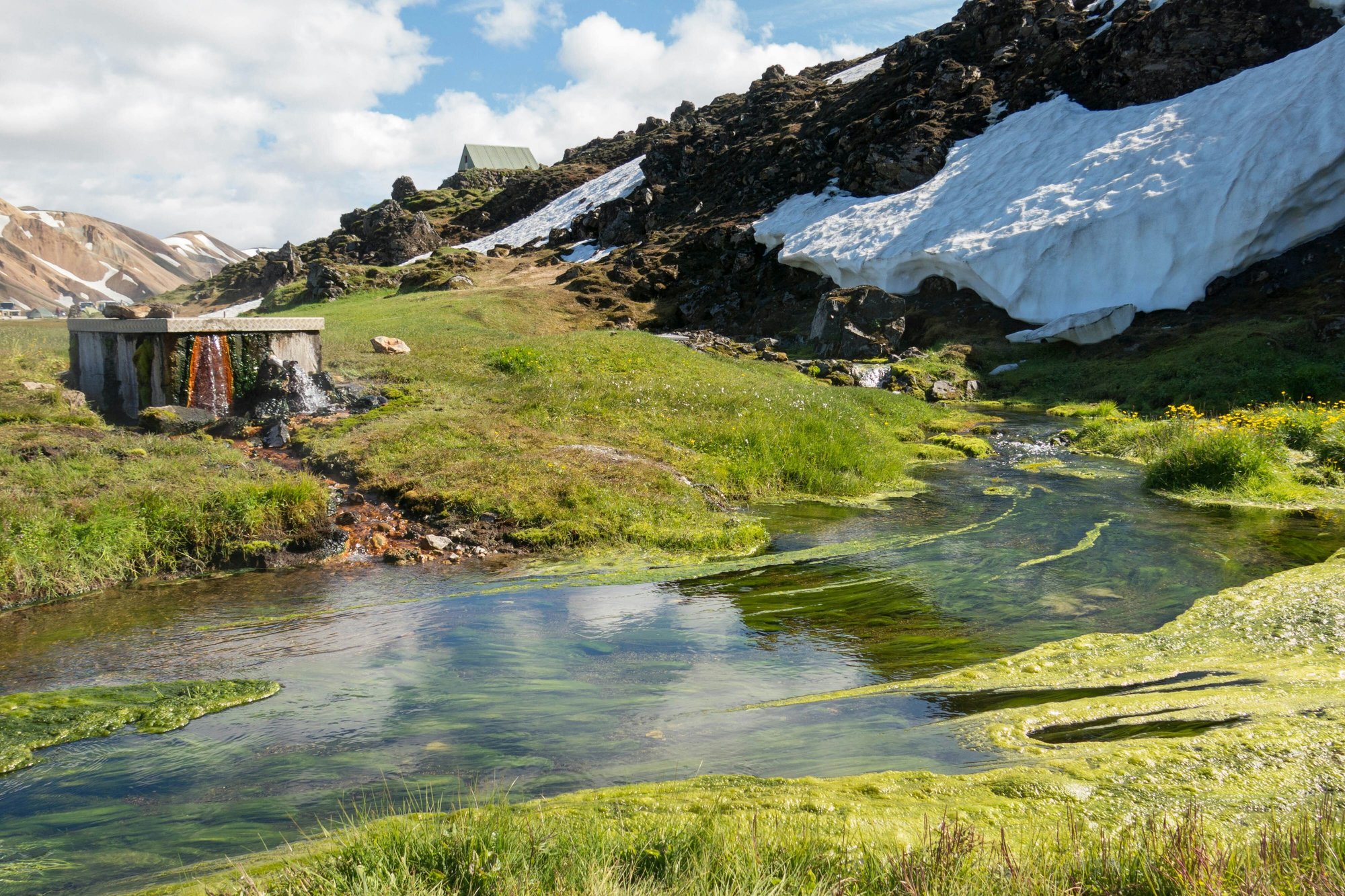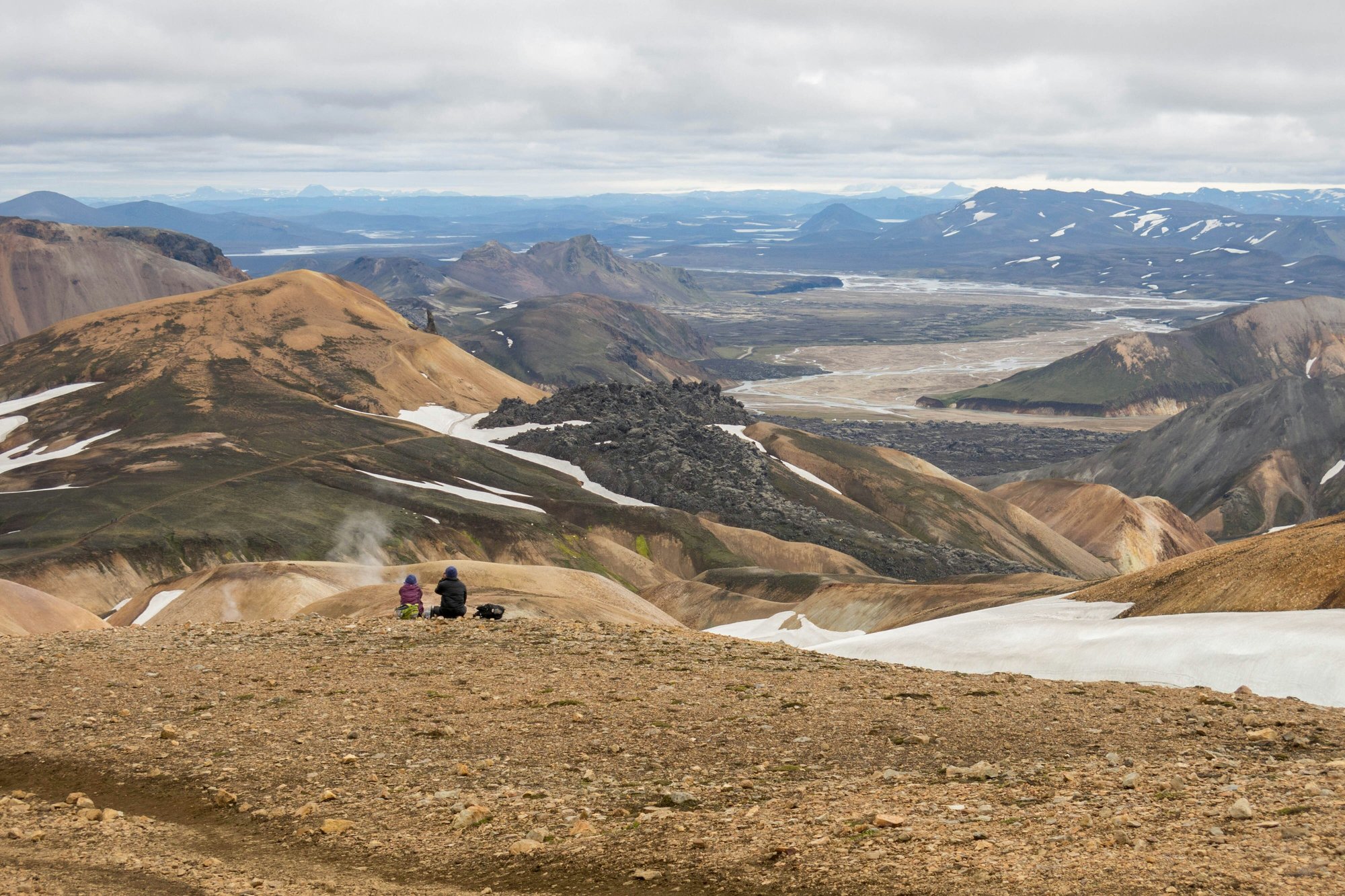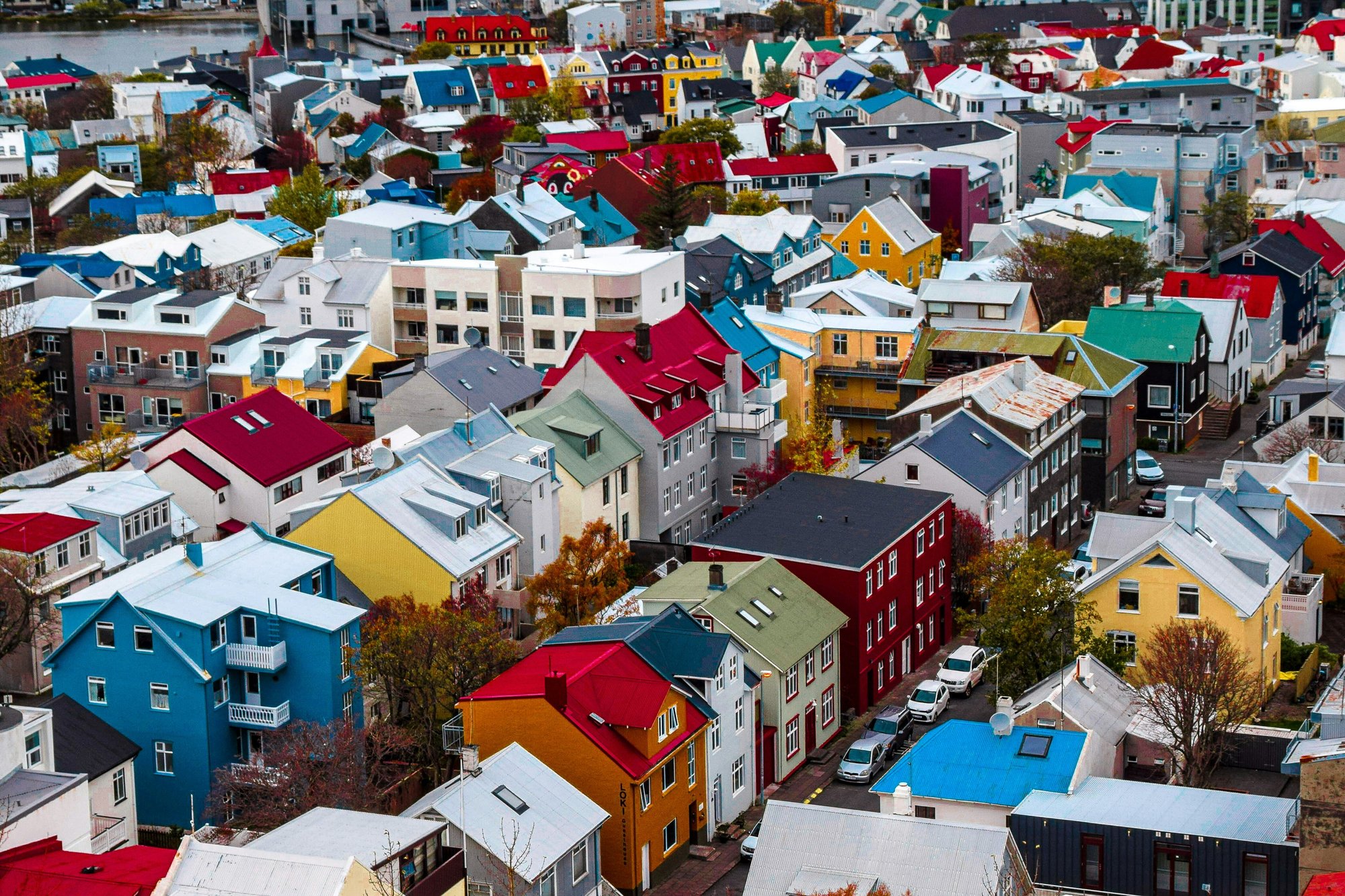Laugavegur Trail
Ready to embark on an adventure that blends natural beauty with the whispers of ancient folklore?
Hiking The Laugavegur Trail in the heart of Iceland
Laugavegur Trail Practical Information
Distance: Approximately 53.8 km (33.4 miles)
Duration: Typically completed in 4 days
Start: Landmannalaugar
End: Þórsmörk
Ability: Expert-level hike requiring good fitness.
Terrain: Diverse landscapes including mountain hiking paths, unpaved sections, and asphalt roads. The trail features significant elevation changes.
Best For: Experienced hikers seeking a challenging trek through Iceland's amazing landscape.
For those looking to extend their adventure, the optional Fimmvörðuháls Trail continues from Thórsmörk to Skógar, culminating at the stunning Skogafoss waterfall.
Best time to visit The Laugavegur Trail
Mid-June to mid-September, with peak conditions in late July to late August, is most pleasant. During this period, snow is minimal, and the landscape is at its most vibrant. In August, temperatures range from 5°C to 15°C, though the weather can be unpredictable so prepare for rain and strong winds. September brings colder and more unpredictable conditions, and temperatures can drop to 0–10°C. Always be prepared for wind, rain and fog as well as sunshine.
How to get to the Laugavegur Trail
To Reykjavik: You can fly to Reykjavik and it takes about an hour from Keflavik Airport to Reykjavik city. You can book the Flybus Airport transfer.
To The Trail: To get to the trail there are two bus companies, Reykjavik Excursions and Trex. Similar costs but check the timetables as they will be different. Best to book ahead. Buses run from Reykjavik to both Landmannalaugar and Thórsmörk during the summer season.
Places to stay on the Laugavegur Trail - Huts & Camping
BOOK AHEAD! Cosy huts can be found every 12-15 kilometres along the Laugavegur Trail, offering both food and accommodation. Meals in the huts can be expensive, around 50 euros. We recommend using Firepot Foods sachets with a lightweight Fire Dragon stove and fuel blocks. Wild camping is not permitted as the trail is a nature reserve. All the huts along the way have camping grounds and charge around 25 euros per night
Available Huts
-
Landmannalaugar: Offers sleeping accommodations for 78 people, and a relaxing
 bath in the natural hot spring nearby and a small shop. Image credit: Raji Rajagopalan
bath in the natural hot spring nearby and a small shop. Image credit: Raji Rajagopalan -
Hrafntinnusker: Very basic and small. Sleeping facilities for 52 inside and a campsite. "The biggest challenge during this leg (Hrafntinnusker - Alftavatn) came in the form of innumerable gullies that had been created by the snowfall and snowmelt of the season. We had to walk up and down these gullies. The gullies were steep, formed of loose rocks and silt, and offered no purchase for the foot." We would recommend hiking poles and
-
Alftavatn: Located by a beautiful lake with camping pitches and hot meals available (a soup can cost 40eur!). The hut accommodates 72. For the Alftavatn - Emstrur section you may encounter river crossings so be prepared with gaiters and waterproofs.
-
Emstrur (Botnar): Near the Emstrua river with sleeping accommodation for 60 and a campsite. Between Emstrur and Thórsmörk you will cross the Throngá river, seasonally dependent on conditions so cross with care. From here you will hike uphill through birch woods to the last hut.
-
Þórsmörk / Thórsmörk (End): Set in a stunning valley with an outdoor sauna and hot meals. A large and spacious cabin sleeps 75.
-
Trail Extension Option: Fimmvörðuháls Hut: Basic facilities on the Fimmvörðuháls Pass route.
-
Skógar: Small town with a hotel and campsite. The bus from Skógar to Reykjavík takes approx 3hrs.
Additional Tips
The weather can change rapidly; always check the forecast and be prepared.
River crossings can be challenging – poles and proper footwear are recommended.
Follow the marked paths and do not walk on the snow. Crevasses and snow holes are dangerous. Stay on the path.
Myths, Legends & Stories
We like trails with stories at Waytrails. The Laugavegur region is steeped in Icelandic folklore, where the natural world and the supernatural intertwine. The geothermal waters of Landmannalaugar are said to be blessed by the hidden folk, or Huldufólk, Iceland’s mystical hidden people. These elusive beings are believed to live within the rocks and mountains, watching over the land. Legend has it that respectful hikers may feel a guiding presence, while those who disturb the natural balance might experience unexplained mischief.
As you trek towards Thórsmörk, named after Thor, the Norse god of thunder, the landscape takes on a mystical quality. Tales speak of a powerful witch who once lived in the valley, using the geothermal waters and wild herbs for healing. She was known to summon mists to protect Thórsmörk from invaders, and some say her spirit still guards the valley.
There are also stories of ancient trolls who roamed the highlands. The jagged rock formations along the trail are said to be trolls who were turned to stone by the morning sun. Travelers are advised to respect these stone figures, lest they rouse the spirits of the old world.



